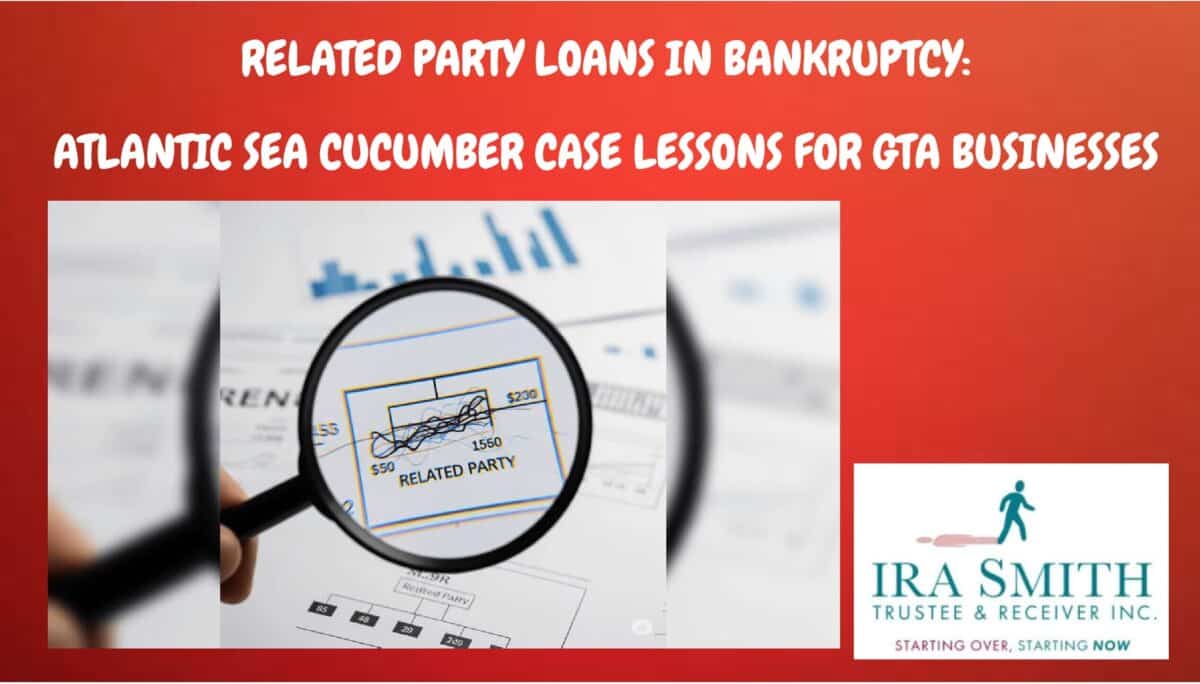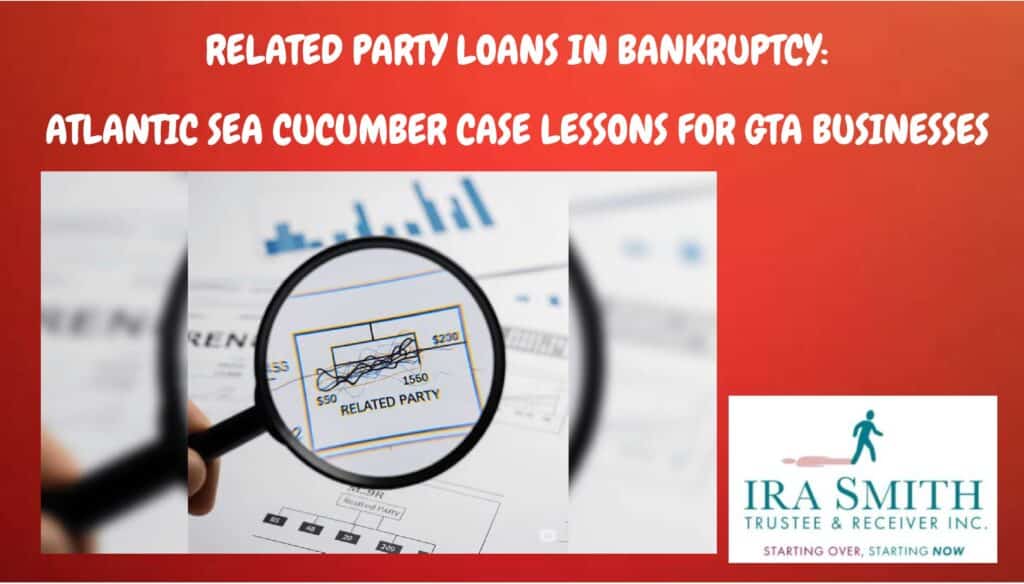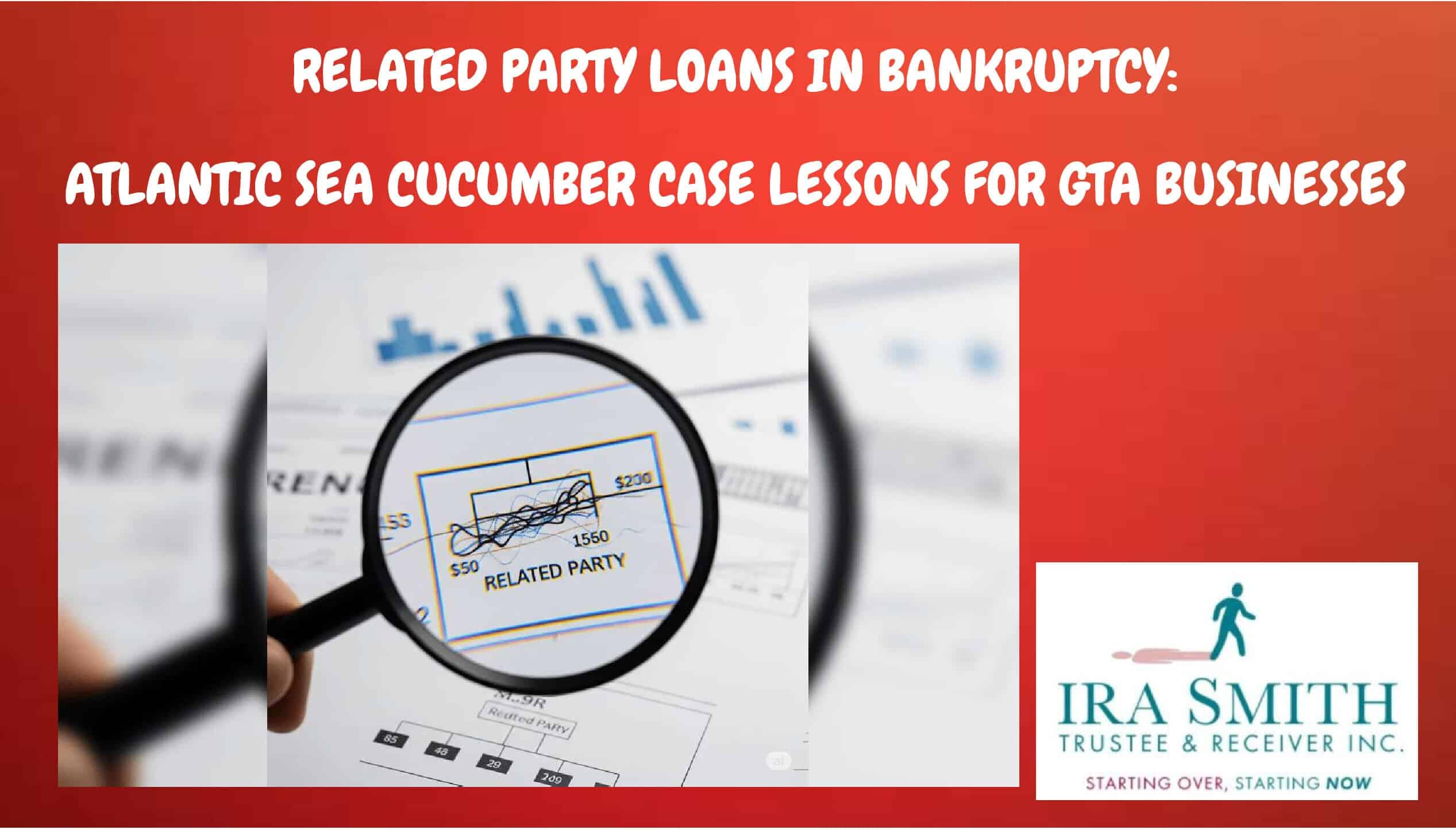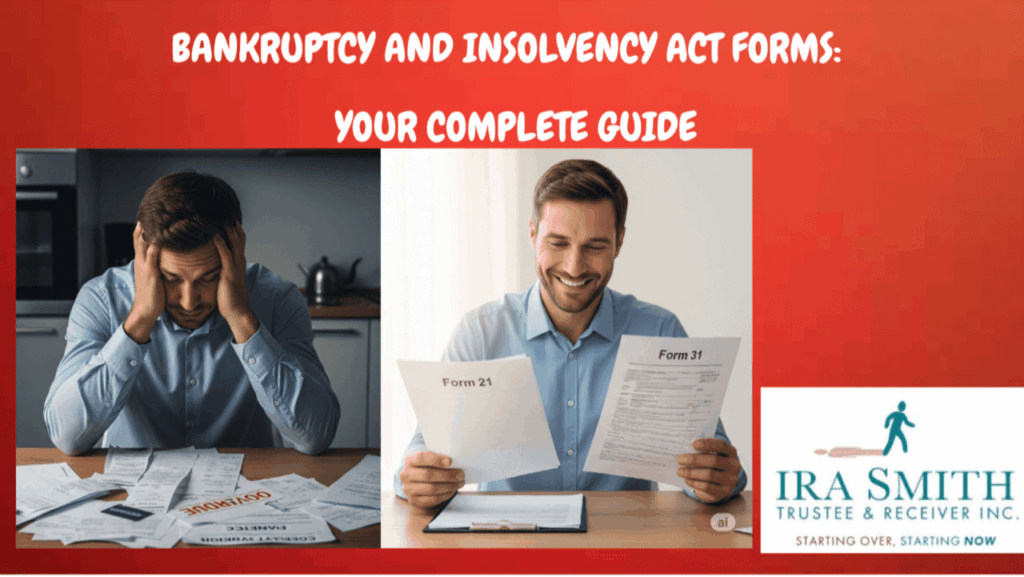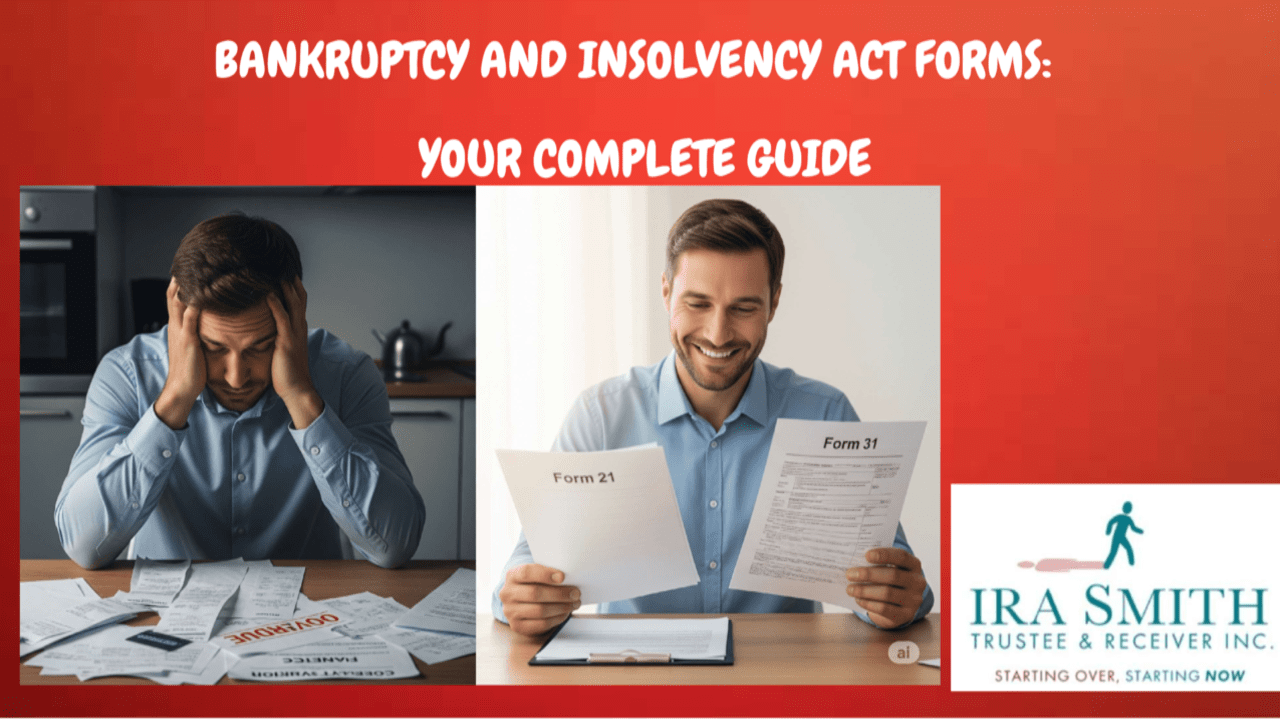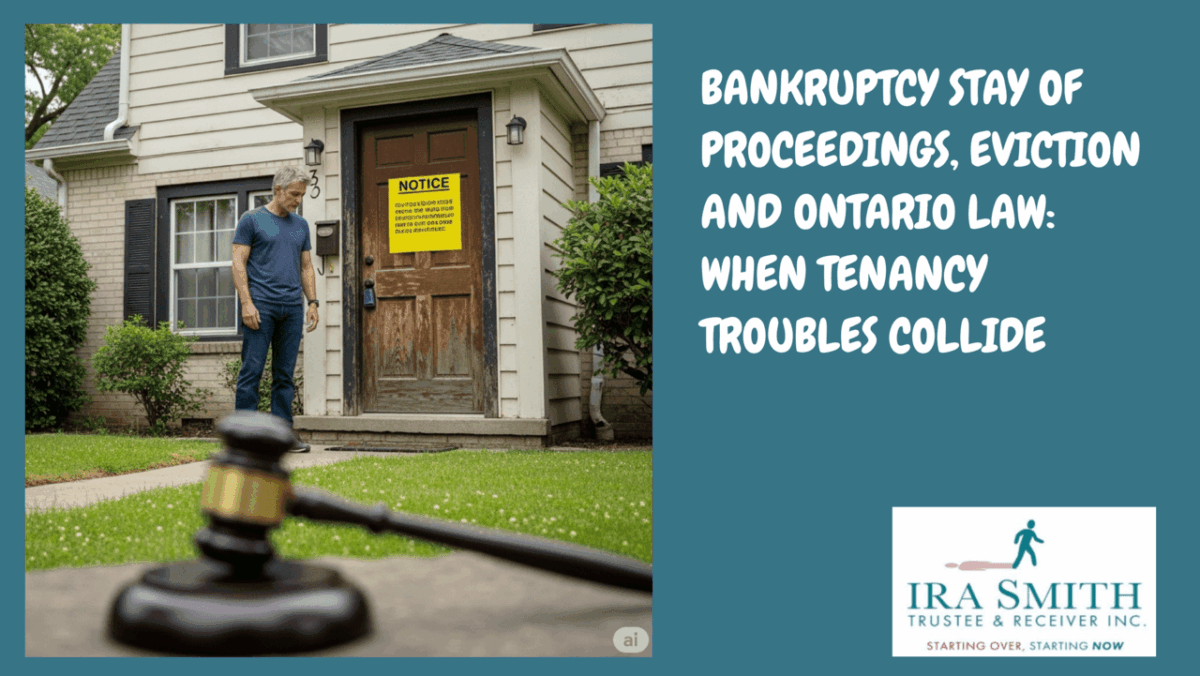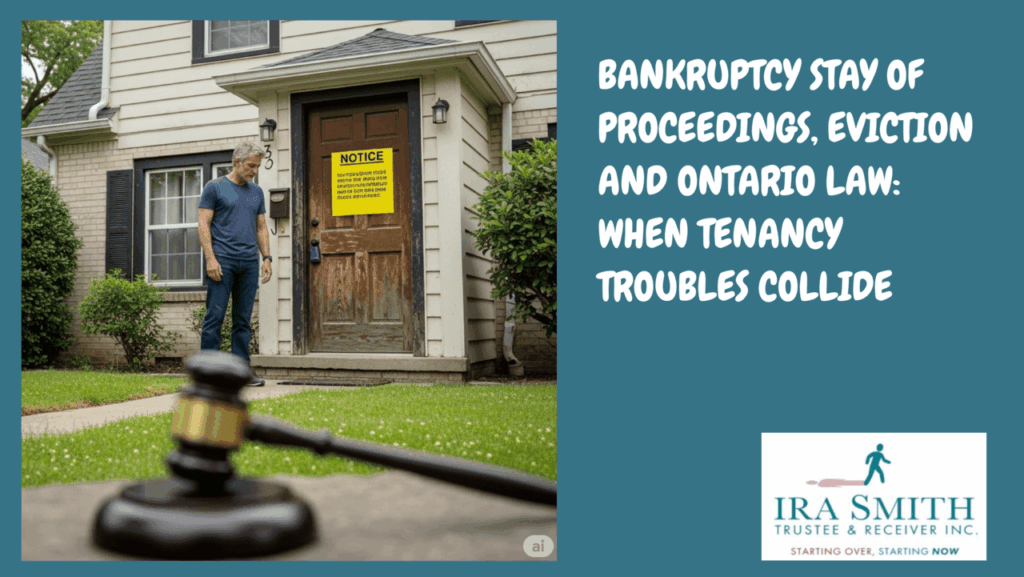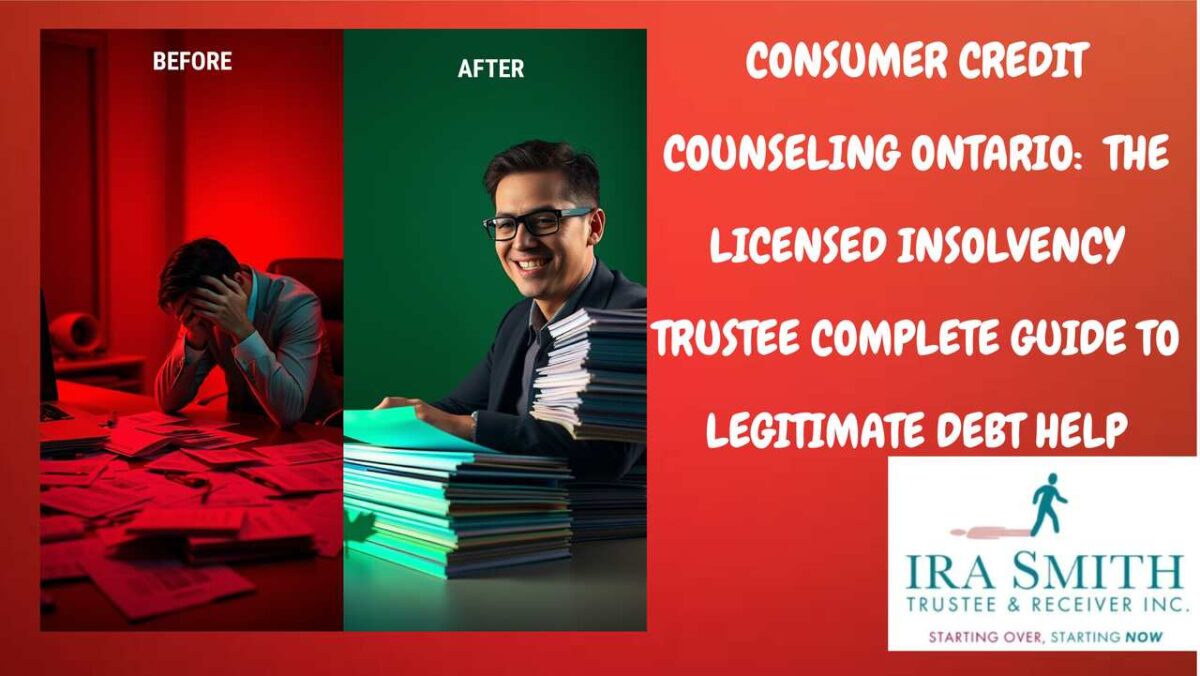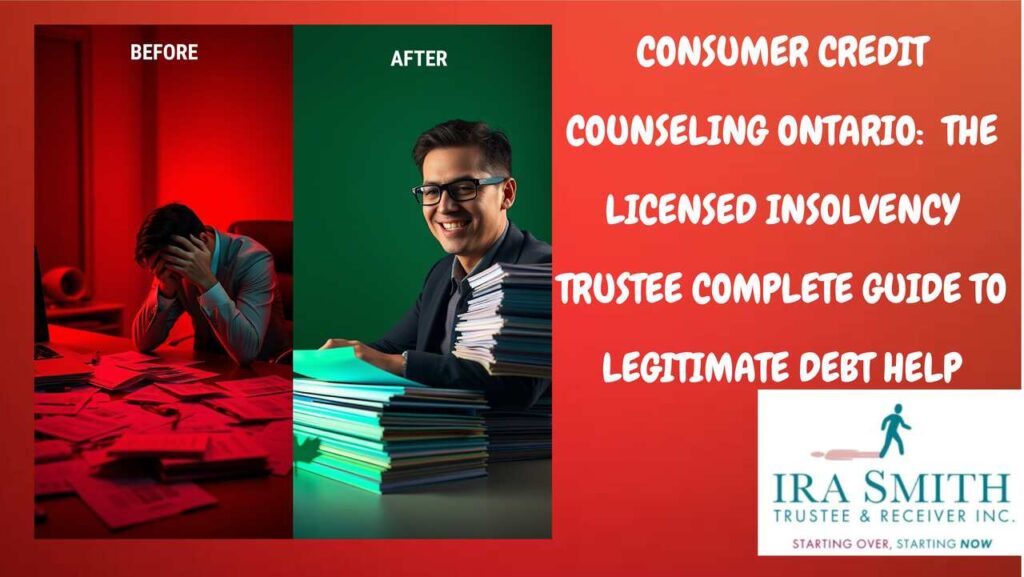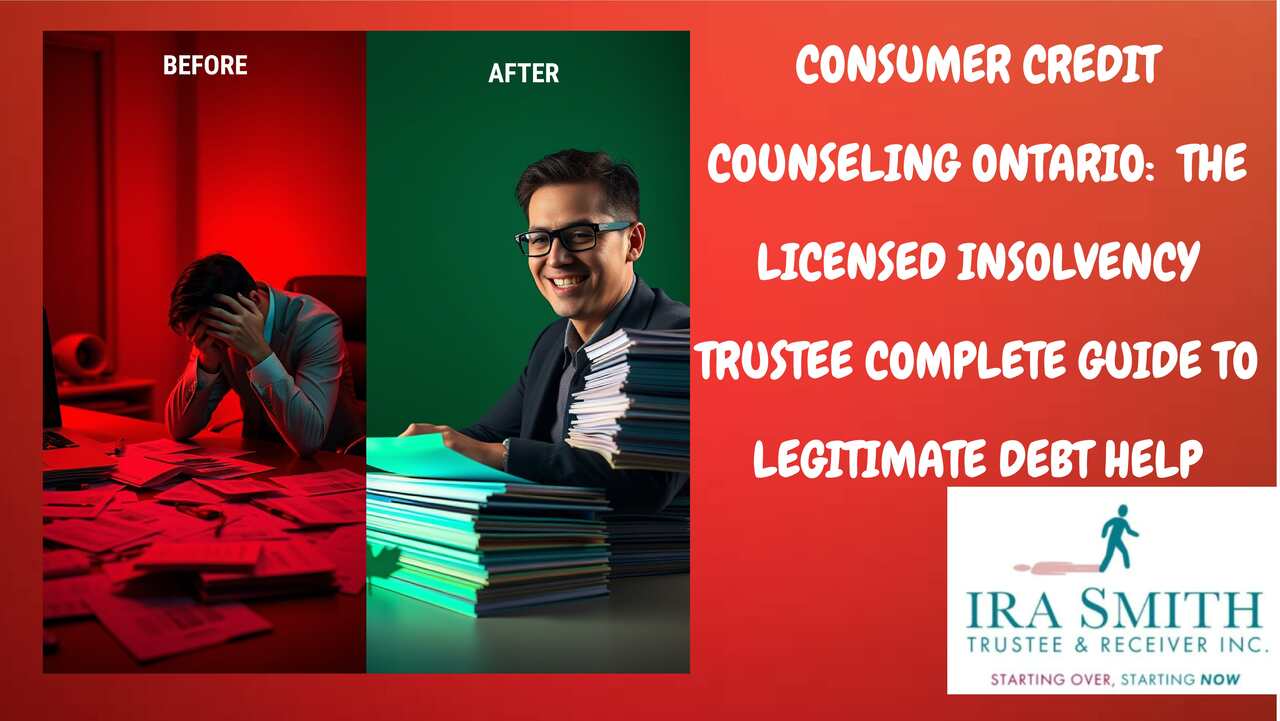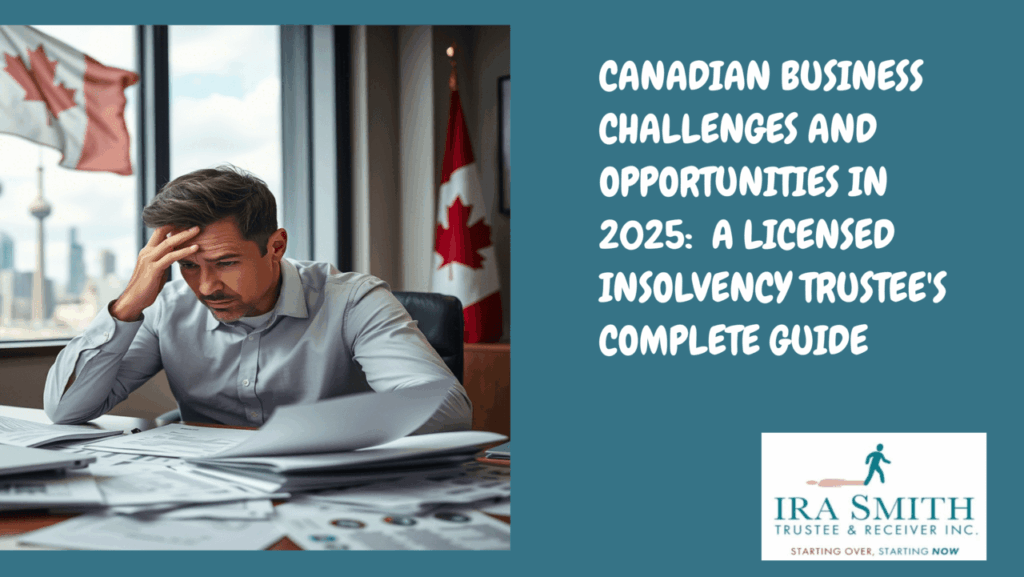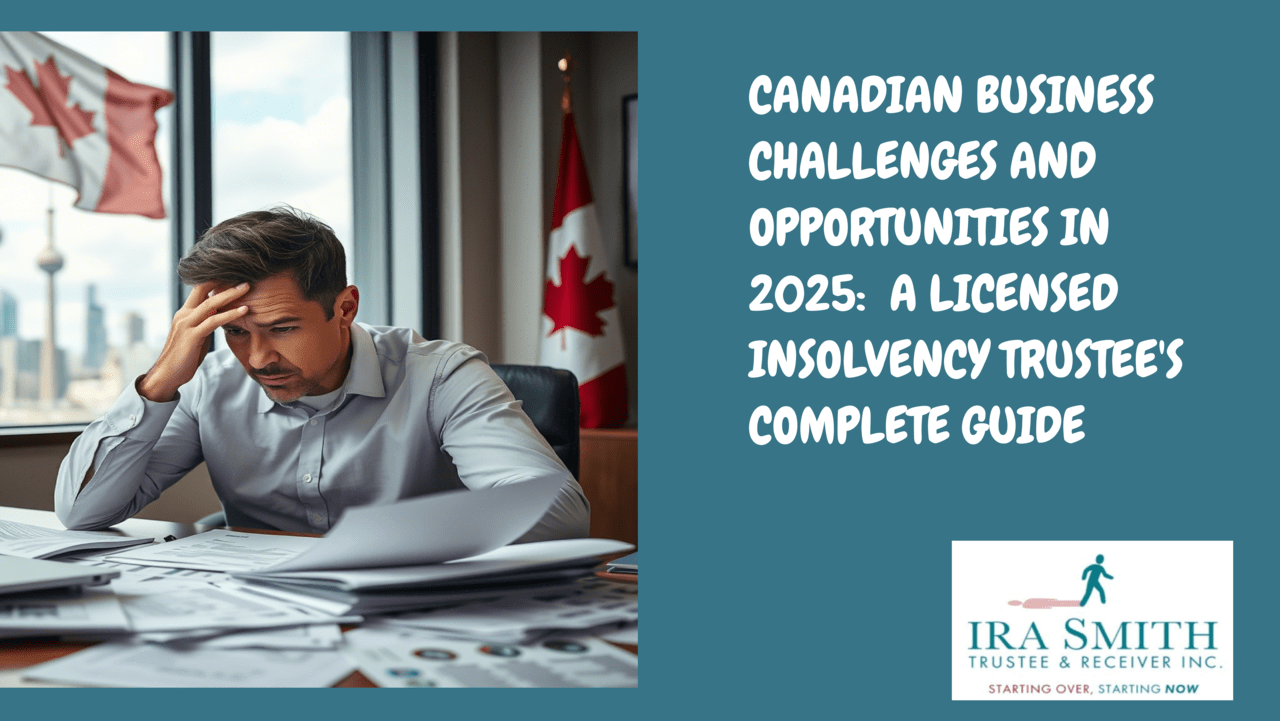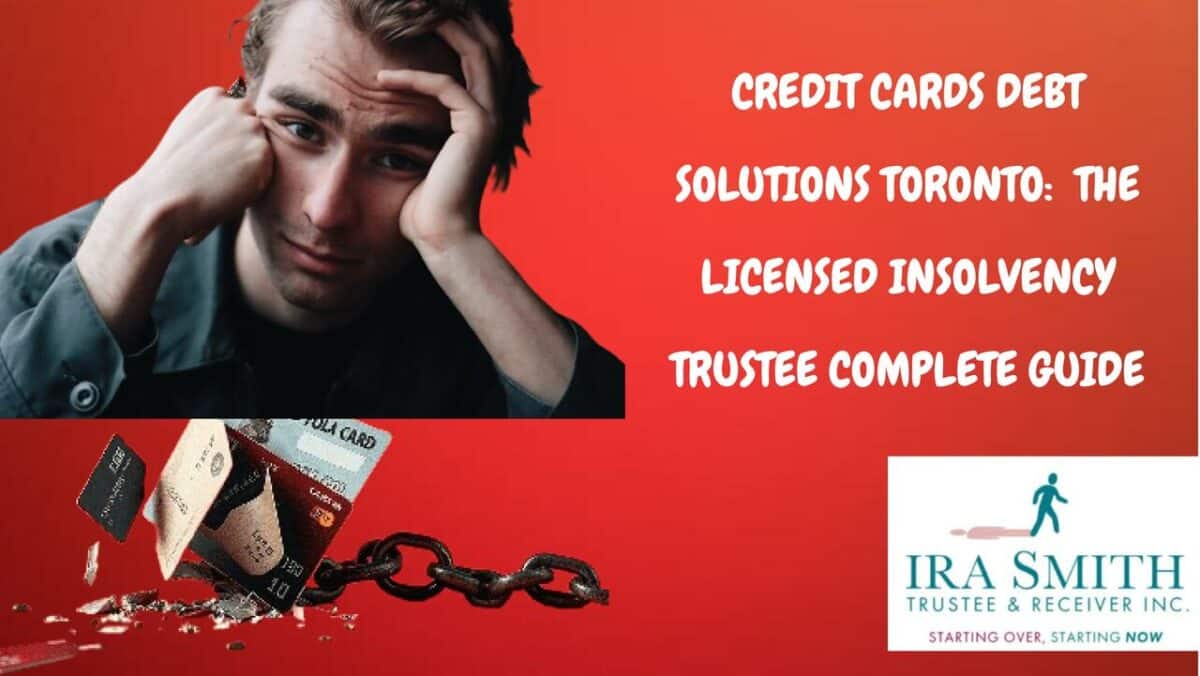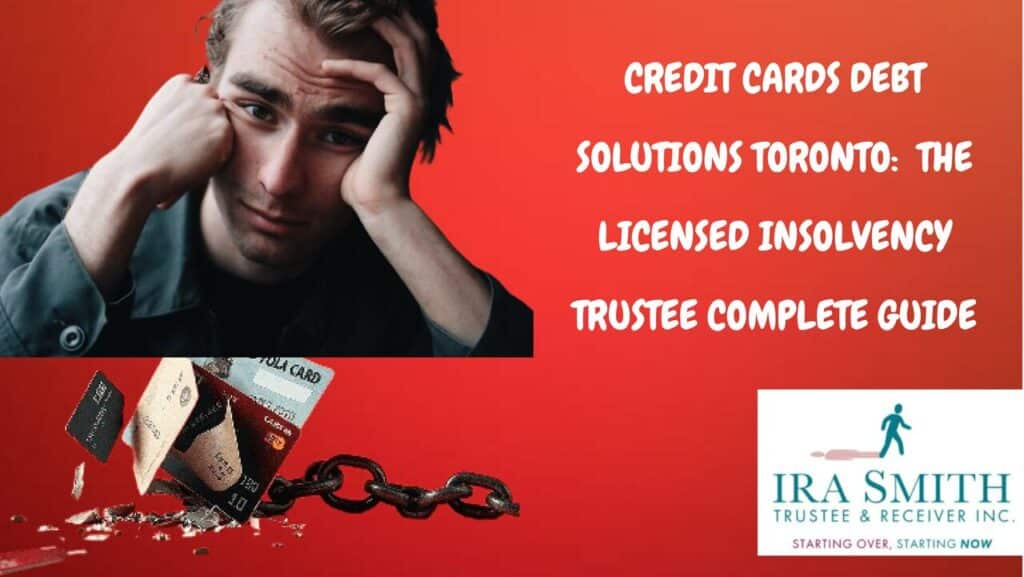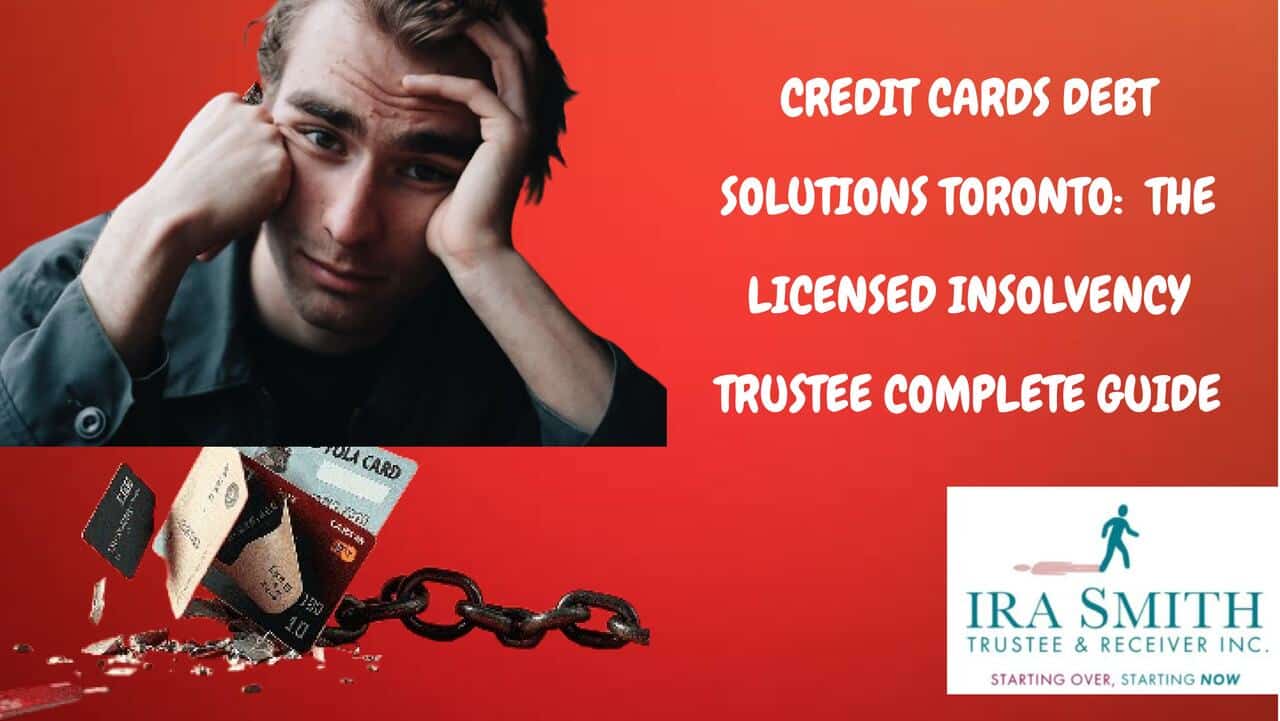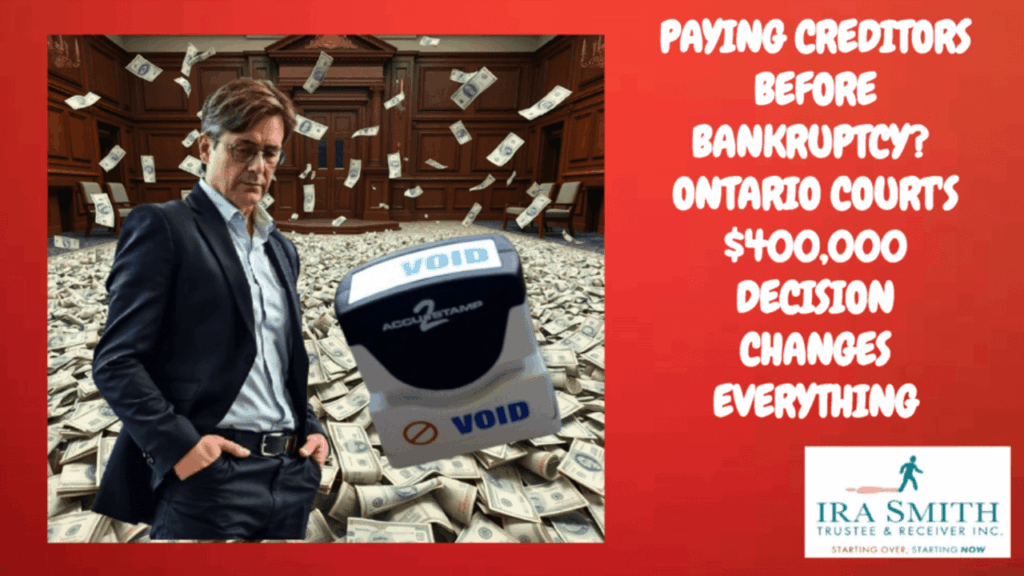Cash Flow Introduction
Are you an Ontario business owner staying up at night because your cash flow isn’t covering your bills? You have money coming in, but it’s not arriving when you need it most, such as when payroll is due or suppliers are demanding payment. If you’re nodding along, you’re experiencing what thousands of Ontario entrepreneurs face right now: a cash flow crisis that threatens even profitable businesses.
As a Licensed Insolvency Trustee who has guided many Ontario businesses through financial difficulties over the past 20 years, I’ve seen how quickly cash flow problems can destroy a company. But I’ve also witnessed businesses transform their financial management and emerge stronger than ever.
According to information released by Equifax Canada in June 2025 in its Newsroom release titled “Debt Pressure Building Up for Canadian Businesses“, the numbers tell a troubling story: in Q1 2025, over 309,000 Canadian businesses—11.3% of all credit-active businesses—missed at least one payment due to cash flow issues. This represents the highest rate since the 2009 financial crisis. The report also states that in Ontario, businesses in accommodation and food services are experiencing 16.9% payment difficulties, while retail operations face 13.2% payment problems.
Here’s what I want every Ontario business owner to understand: cash flow problems are solvable. With proper knowledge, the right tools, and sometimes professional guidance, you can master your cash flow and build a financially resilient business. This Brandon’s Blog will show you exactly how to do it.
What is Cash Flow?
Definition and Key Concepts
Cash flow is the movement of money into and out of your business over a specific period. Think of it as the financial heartbeat of your company—money flowing in from customers, flowing out to suppliers, employees, and other expenses. Unlike profit, which can include non-cash items like depreciation, cash flow shows you the actual cash available to run your business.
Many Ontario business owners confuse it with profit, but they’re fundamentally different. You can be profitable on paper while having negative cash, or have positive cash while showing an accounting loss. This distinction is crucial for business survival.
Here’s a real example from my practice: A Toronto small business retailer showed $15,000 in monthly profit but had negative cash because customers paid with credit cards (creating a 2-3 day delay) while staff needed to be paid weekly and suppliers demanded COD payment. The timing mismatch created a cash position crisis despite healthy profits.
Importance of Cash Flow
Cash flow is the lifeblood of your business. Without an adequate level, you cannot:
- Pay employees on time
- Meet supplier obligations
- Invest in growth opportunities
- Handle unexpected expenses
- Maintain business operations
Strong cash flow management provides several key benefits:
- Operational stability: Ensures you can meet all obligations as they come due
- Growth funding: Provides resources for expansion without external financing
- Emergency preparedness: Creates buffers for unexpected challenges
- Negotiating power: Gives you leverage with suppliers and customers
- Stress reduction: Eliminates the anxiety of wondering if you can pay bills
According to Statistics Canada’s Canadian Survey on Business Conditions, second quarter 2025, Canada’s challenging business environment is such that 65.4% of businesses cite rising costs as their primary concern. Effectively managing this isn’t just important—it’s essential for survival.

Glossary of Common Cash Flow Terms
Understanding cash flow terminology is crucial for effective financial management in business. Here are the key terms every Ontario business owner should know:
A-C
Accounts Payable: Money your business owes to suppliers and vendors for goods or services purchased on credit. Managing payables strategically helps optimize timing.
Accounts Receivable: Money owed to your business by customers for products or services delivered but not yet paid for. Efficient collection of receivables is crucial for a healthy business.
Accrual Accounting: An accounting method where revenues and expenses are recorded when they occur, not when cash changes hands. This creates the difference between profit and cash.
Capital Expenditures (CapEx): Money spent on acquiring or upgrading physical assets like equipment, property, or technology. These investments are subtracted from operating cash flow to calculate free cash flow.
Cash Conversion Cycle: The time it takes for a business to convert its investments in inventory and receivables back into cash. A shorter cycle means better cash flow.
Cash Flow Forecast: A projection of expected cash inflows and outflows over a specific period, typically 13 weeks or 12 months. Essential for planning and avoiding cash shortages.
Cash Flow from Financing Activities: Cash movements related to funding your business, including loan proceeds, repayments, owner investments, and dividend payments.
Cash Flow from Investing Activities: Cash spent on or received from investments in your business’s future, such as equipment purchases, property acquisitions, or asset sales.
Cash Flow from Operating Activities: Cash generated from your core business operations—the most important indicator of business health.
Credit Line: A pre-approved loan amount that businesses can draw upon as needed. Provides flexibility for managing cash fluctuations.
D-H
Days Sales Outstanding (DSO): The average number of days it takes to collect payment from customers. Lower DSO means faster cash collection.
Depreciation: The gradual reduction in an asset’s value over time. It’s a non-cash expense that affects profit but not cash flow.
Direct Method: A cash flow statement preparation method that lists actual cash receipts and payments, providing clear visibility into cash sources and uses.
Free Cash Flow: Operating cash flow minus capital expenditures. Represents cash available for owners, debt repayment, or reinvestment after maintaining current operations.
HST (Harmonized Sales Tax): The 13% combined federal and provincial sales tax in Ontario. Creates significant cash impacts, especially for businesses with longer collection cycles.
I-N
Indirect Method: A cash flow statement preparation method that starts with net income and adjusts for non-cash items and working capital changes.
Insolvency: The inability of a business to pay its debts as they come due. Requires professional intervention to avoid bankruptcy.
Inventory Turnover: How quickly a business sells and replaces its inventory. Higher turnover generally improves cash flow.
Licensed Insolvency Trustee: A federally regulated professional who helps businesses and individuals deal with debt problems and insolvency procedures.
Liquidity: The ability to meet short-term financial obligations. High liquidity means better cash flow management.
Net Cash Flow: The sum of all cash flows (operating + investing + financing), showing the overall change in cash position.
Net Income: Profit after all expenses and taxes. Different from cash flow because it includes non-cash items like depreciation.
O-Z
Operating Cash Flow Margin: Operating cash flow divided by revenue, expressed as a percentage. Healthy businesses typically maintain margins above 10%.
Payroll: Employee wages and benefits—often the largest fixed expense for Ontario businesses and has a critical impact on the cash position of the business.
Seasonal Variations: Predictable changes in business activity throughout the year that affect the seasonal cash patterns.
Trade Credit: Credit extended by suppliers allowing businesses to purchase goods or services and pay later.
Working Capital: Current assets minus current liabilities. Changes in working capital affects the cash position.
13-Week Rolling Forecast: A detailed cash flow projection covering the next 13 weeks, updated weekly. Essential for short-term cash management.
Types of Cash Flow
Understanding the different types helps you identify where your money is coming from and going to. Each type tells a different story about your business’s financial health.
1. Operating Cash Flow
Operating cash flow represents money generated from your core business operating activities—selling products or services. Cash flow from operating activities is the most important type because it shows whether your business model is generating cash.
Positive operating cash flow means your business operations are generating more cash than they consume. This is essential for long-term sustainability.
Negative operating cash flow indicates your operations are consuming more cash than they generate, which is unsustainable without external funding.
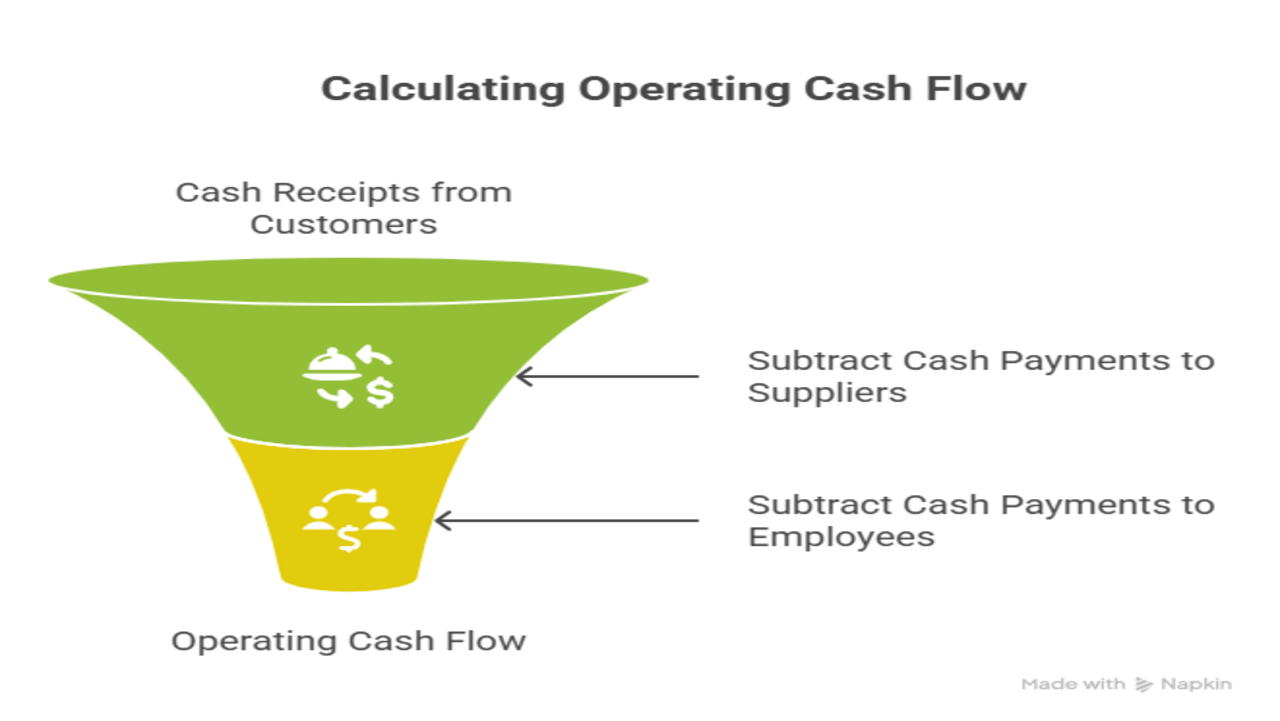
2. Investing Cash Flow
Investing cash flow tracks money spent on or received from investing activities in your business’s future. Cash flow from investing activities include:
- Equipment purchases
- Property acquisitions
- Technology investments
- Sale of business assets
Negative investing cash flow often indicates healthy growth, as you’re investing in your business’s future. However, these investments must be balanced against your ongoing operating cash flow capacity.
3. Financing cash flow
This shows money moving in and out related to funding your business. The most common cash flow from financing activities is:
- Loan proceeds (positive)
- Loan repayments (negative)
- Owner investments (positive)
- Dividend payments (negative)
4. Free cash flow
Free cash flow is operating cash flow minus capital expenditures. It represents the cash available for owners, debt repayment, or reinvestment after maintaining current operations.
Formula: Free Cash Flow = Operating Cash Flow – Capital Expenditures
Free cash flow is crucial because it shows the cash your business generates after investing in maintaining its productive capacity.
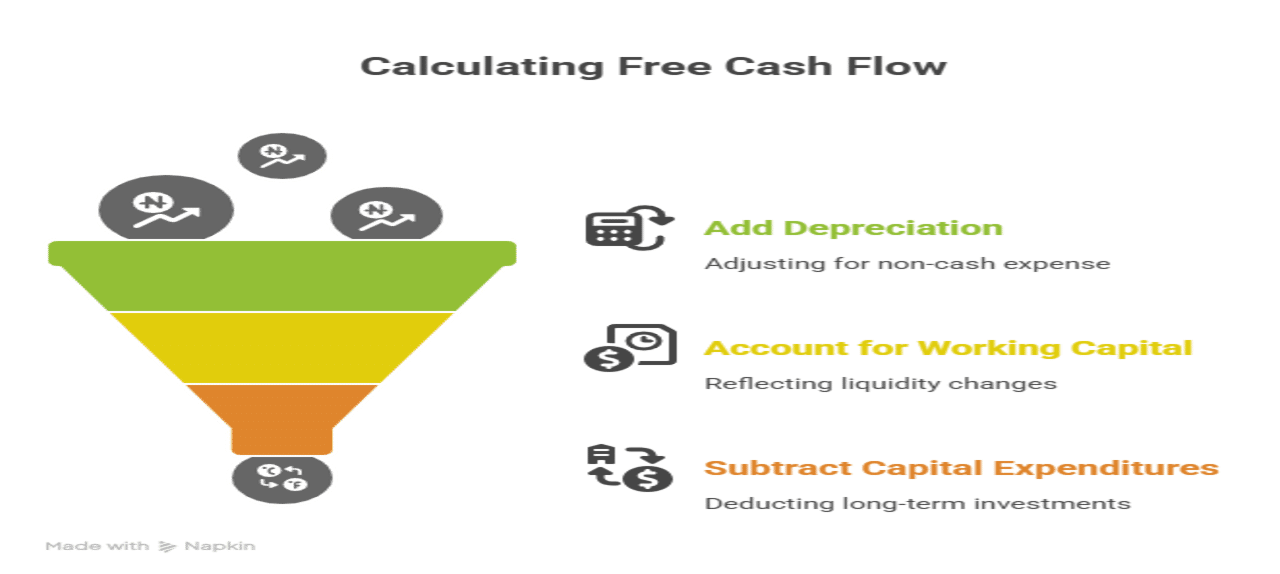
5. Net Cash Flow
Net cash flow is the sum of all cash flows (operating + investing + financing). It shows the overall change in your cash position over a period.
Positive net cash flow means your cash position improved. Negative net cash flow means your cash position declined.
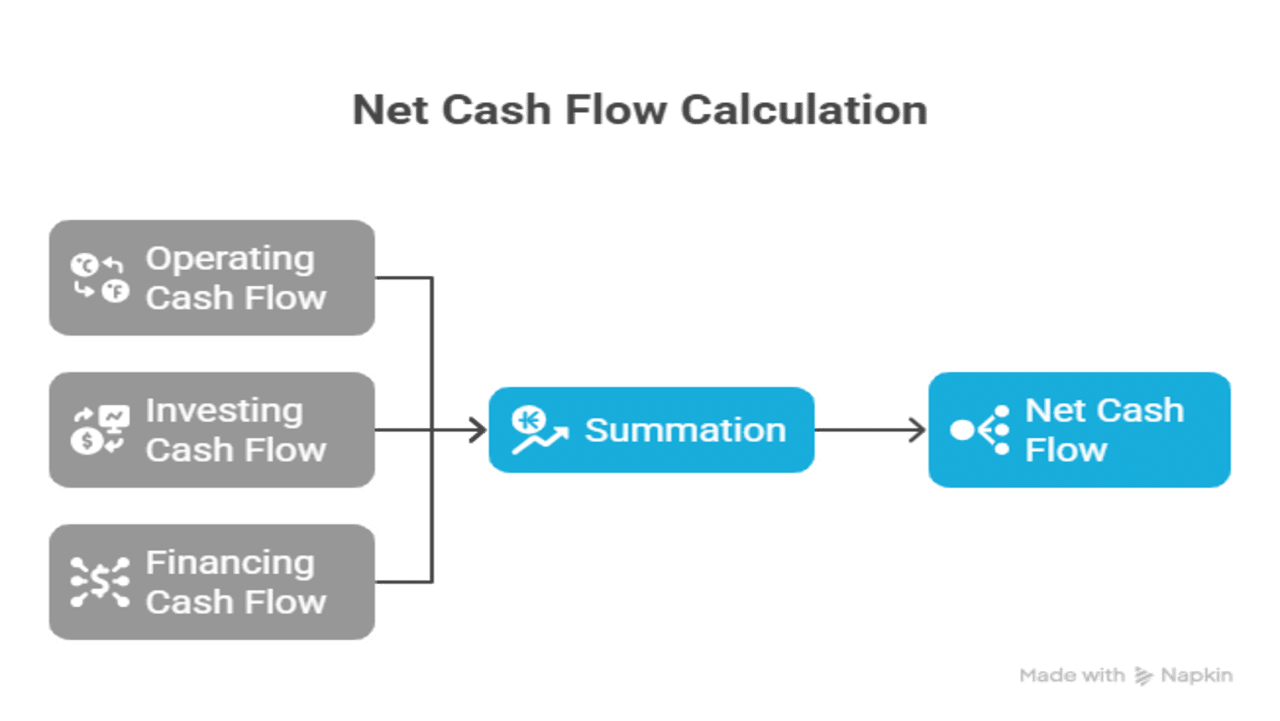
Cash Flow Formulas Explained
Understanding how to do the different calculations will give you powerful insights into your business’s financial health.
1. How to Calculate Operating Cash Flow
Direct Method: Operating Cash Flow = Cash Receipts from Customers – Cash Payments to Suppliers and Employees
Indirect Method: Operating Cash Flow = Net Income + Depreciation + Changes in Working Capital
The indirect method is more commonly used because it’s easier to calculate from standard financial statements of the balance sheet, showing the financial position of the business and the income statement, showing the profit or loss for the fiscal period.
2. How to Calculate Free Cash Flow
Basic Formula: Free Cash Flow = Operating Cash Flow – Capital Expenditures
Expanded Formula: Free Cash Flow = Net Income + Depreciation – Changes in Working Capital – Capital Expenditures
Free cash flow is particularly important for business valuation and understanding your company’s ability to generate cash for owners.
3. Calculating Net Cash Flow
Formula: Net Cash Flow = Operating Cash Flow + Investing Cash Flow + Financing Cash Flow
This calculation shows your overall cash position change during a specific period.
Cash Flow Forecasting Techniques
This forecasting predicts future cash positions based on expected receipts and disbursements. Effective forecasting involves:
- 13-Week Rolling Forecast: Update weekly, showing details of incoming and outgoing cash for the next 13 weeks
- Monthly Forecast: Broader view covering 12-18 months
- Scenario Planning: Best case, worst case, and most likely scenarios
- Key Forecasting Steps:
- Estimate sales based on historical data and market conditions
- Project collection timing based on customer payment patterns
- Schedule known expenses (payroll, rent, loan payments)
- Include variable expenses tied to sales levels
- Account for seasonal variations
- Update regularly with actual results
Cash Flow Statements
Cash flow statements provide a formal record of your business’s cash movements, offering crucial insights into financial health and operational efficiency.
Direct Method
The direct method lists actual cash receipts and payments:
Cash Inflows:
- Collections from customers
- Interest received
- Other operating receipts
Cash Payments:
- Payments to suppliers
- Employee wages
- Interest paid
- Tax payments
The direct cash flow statement method provides clear visibility into cash sources and uses, making it easier to identify improvement opportunities.
Indirect Method
The indirect method starts with net income and adjusts for non-cash items:
- Starting Point: Net Income
- Add Back: Depreciation, amortization, losses on asset sales
- Subtract: Gains on asset sales
- Adjust for Working Capital Changes: Changes in accounts receivable, inventory, and accounts payable.
Most businesses use the indirect cash flow statement method because it’s easier to prepare from existing financial statements.
Differences Between Cash Flow and Profit
Understanding the difference between cash flow and profit is crucial for business survival:
Profit (Net Income):
- Includes non-cash items like depreciation
- Uses accrual accounting (revenue recorded when earned, expenses when incurred)
- Can be positive while cash flow is negative
- Disclosed in the income statement
Cash flow
- Shows actual cash movements
- Reflects the timing of cash receipts and payments
- Can be positive while showing accounting losses
- Does not include any accrual accounting items
Real Example: A Mississauga manufacturing company showed $50,000 quarterly profit but had negative $25,000 cash flow because customers took 90 days to pay while suppliers required 30-day payment terms.
Significance of Cash Flow Analysis
Cash flow analysis provides insights that profit analysis alone cannot offer, making it essential for business decision-making.
Insights into Financial Health
Cash flow analysis reveals:
- Operational efficiency: How well your business converts sales to cash
- Liquidity position: Your ability to meet short-term obligations
- Growth sustainability: Whether growth is self-funding or through external financing activities
- Debt capacity: How much additional debt your business can support
- Dividend capacity: How much cash is available for owner distributions
Identifying Investment Opportunities
Strong cash flow analysis helps identify:
- Expansion opportunities: When you have excess cash for growth
- Efficiency improvements: Areas where cash flow can be optimized
- Asset investments: Timing for equipment or facility upgrades
- Market opportunities: When you can invest in new markets or products
Regular cash flow analysis also helps you avoid overextending during good times and prepare for downturns.
Managing Cash Flow
Effective cash flow management requires different strategies for different business types and situations.
Strategies for Individuals
For sole proprietors and individual business owners:
- Separate Business and Personal Finances: Maintain separate accounts to track business cash flow accurately
- Pay Yourself a Salary: Regular draws help predict cash needs
- Build Personal Emergency Fund: Separate from business reserves
- Plan for Tax Payments: Set aside money for quarterly tax obligations
Strategies for Businesses
- Invoice immediately upon delivery
- Offer early payment discounts
- Implement automated collection systems
- Require deposits for large orders
- Optimize Inventory Management:
- Use just-in-time inventory systems
- Negotiate consignment arrangements
- Liquidate slow-moving stock
- Improve inventory turnover
- Manage Payables Strategically:
- Negotiate extended payment terms with suppliers
- Take advantage of early payment discounts when beneficial
- Schedule payments to match cash inflows
- Maintain good supplier relationships
Cutting Expenses and Cost Management
- Fixed Cost Reduction:
- Renegotiate rent and lease agreements
- Consolidate facilities where possible
- Review insurance coverage for potential savings
- Eliminate unused services and subscriptions
- Variable Cost Optimization:
- Negotiate better supplier terms
- Improve operational efficiency
- Reduce waste and inefficiencies
- Implement cost control systems
Real Example: A Toronto wholesaler reduced monthly expenses by renegotiating its premises lease terms and switching to more efficient suppliers.
Optimizing Credit Utilization
- Business Credit Lines:
- Maintain credit lines for cash flow smoothing
- Use credit strategically, not as a crutch
- Pay down balances quickly to maintain capacity
- Monitor credit utilization ratios
- Supplier Credit:
- Negotiate payment terms that match your cash flow cycle
- Maintain good relationships to preserve credit access
- Use trade credit to bridge cash flow gaps
- Monitor supplier payment terms for changes
Utilizing Cash Flow Analysis Tools
Modern technology offers powerful tools for cash flow management and analysis.
Cash Flow Software Options
The Business Development Bank of Canada (BDC) has compiled a listing titled Free and low-cost accounting and invoicing software. They identify 15 different software packages that can fulfill all of your accounting and financial management needs, including the preparation of the Statement of Cash Flows.
Key Features to Look For:
- Real-time cash position monitoring
- Automated forecasting capabilities
- Integration with bank accounts
- Customizable reporting
- Mobile accessibility
Benefits and Limitations
Benefits of Cash Flow Tools:
- Automation: Reduces manual work and errors
- Real-time visibility: Instant access to cash position
- Forecasting accuracy: Better predictions based on historical data
- Scenario planning: Ability to model different situations
- Integration: Connects with banking and accounting systems
Limitations to Consider:
- Cost: Quality tools require investment
- Learning curve: Staff training may be required
- Data quality: Tools are only as good as the input data
- Complexity: Some tools may be overly complex for small businesses
FREE OFFER: We have put together a basic 13-week cash flow projection in Google Sheets format. It can be either transferred to your Google Drive or downloaded in Excel format for your use. If you would like a copy of it, please tell our AI financial coach, Fiona Ledger, that you would like a copy of our 13-week cash flow projection template and also provide your name and email address and it will be sent to you.
Ontario-Specific Cash Flow Challenges
Ontario businesses face unique challenges that require targeted solutions:
- HST Management: The 13% HST creates significant cash impacts, especially for businesses with longer collection cycles. Planning for HST payments is crucial.
- Seasonal Variations: Many Ontario businesses experience significant seasonal fluctuations, requiring careful cash planning for slow periods.
- Supply Chain Costs: Rising transportation and logistics costs affect cash timing and amounts.
- Labour Costs: Minimum wage increases and benefit costs impact cash predictability.
- Energy Costs: Fluctuating energy prices affect operational cash, especially for manufacturing businesses.
Warning Signs of Cash Flow Problems
Recognizing early warning signs helps prevent cash crises:
- Operational Indicators:
- Difficulty making payroll consistently
- Delayed supplier payments
- Increased reliance on credit lines
- Declining cash reserves
- Frequent overdraft fees
- Financial Ratio Warnings:
- Operating cash flow margin below 10%
- Increasing days sales outstanding
- Decreasing days payable outstanding
- Declining current ratio
- Negative free cash flow trends
- Behavioural Changes:
- Delaying equipment maintenance
- Reducing inventory levels excessively
- Cutting essential services
- Avoiding growth opportunities due to cash constraints
Professional Help for Cash Flow Problems
Some cash problems require professional intervention beyond what business owners can handle alone.
When to Seek Help:
- Consistently negative operating cash flow
- Inability to meet payroll or critical payments
- Creditor pressure and collection actions
- Need for formal debt restructuring
- Considering business closure due to cash issues
How A Licensed Insolvency Trustee Can Help:
- Cash flow analysis: Comprehensive review of your financial situation
- Debt restructuring: Formal proposals to creditors
- Creditor negotiations: Professional representation in discussions
- Business reorganization: Structured approach to financial recovery
- Insolvency procedures: When necessary, formal bankruptcy protection, financial restructuring or liquidation processes
Real Success Story: A Hamilton company with annual cash deficits worked with our team to restructure supplier payments, implement better collection procedures, and negotiate with creditors through a formal financial restructuring process. Within six months, they achieved positive cash balances and avoided bankruptcy.
Building Long-Term Cash Flow Resilience
Surviving immediate cash problems is just the beginning. Building long-term resilience requires systematic changes:
Diversification Strategies:
- Multiple revenue streams
- Diversified customer base
- Various supplier relationships
- Multiple financing sources
Operational Improvements:
- Efficient processes and systems
- Strong financial controls
- Regular performance monitoring
- Continuous improvement culture
Financial Planning:
- Regular cash forecasting
- Scenario planning and stress testing
- Emergency reserve building
- Strategic investment planning
Government Resources and Support
Ontario and federal governments offer various programs to help businesses with cash challenges:
Ontario Programs:
Federal Programs:
Accessing Support:
- Contact local economic development offices
- Work with business advisors
- Consult with accountants and lawyers
- Engage with industry associations
Taking Action: Your Cash Flow Recovery Plan
If you’re facing cash challenges, here’s your action plan:
Immediate Steps (Next 7 Days):
- Calculate your current cash position
- Create a 13-week cash flow forecast
- Contact customers with outstanding invoices
- Review and postpone non-essential expenses
- Communicate with key suppliers about payment timing
Short-Term Actions (Next 30 Days):
- Implement automated invoicing systems
- Negotiate extended payment terms with suppliers
- Explore alternative financing options
- Conduct a comprehensive expense audit
- Seek professional advice if problems persist
Long-Term Strategy (Next 90 Days):
- Develop comprehensive cash management systems
- Build emergency cash reserves
- Diversify revenue streams
- Strengthen customer relationships
- Create contingency plans for various scenarios
Frequently Asked Questions About Cash Flow
General Cash Flow Questions
Q: What’s the difference between cash flow and profit?
A: This is the most common confusion I see among Ontario business owners. Profit is an accounting measure that includes non-cash items like depreciation and uses accrual accounting principles. Cash flow shows actual money moving in and out of your business.
Q: How much cash should my business keep on hand?
A: Most Ontario businesses should maintain 3-6 months of operating expenses in cash reserves. However, this depends on your industry, seasonality, and revenue predictability. Seasonal businesses like landscaping or retail may need larger reserves to cover slow periods.
Q: How often should I review my cash flow?
A: I recommend weekly cash flow reviews for most businesses, with daily monitoring during tight periods. Monthly reviews aren’t frequent enough to prevent cash crises. Use a 13-week rolling forecast that you update weekly.
Q: Can a profitable business go bankrupt?
A: Absolutely. I’ve seen many profitable Ontario businesses fail because they couldn’t manage cash flow. If you can’t pay employees or suppliers when payments are due, profitability won’t save you. This is why cash management is more critical than profit management for business survival.
Cash Flow Forecasting
Q: What’s the best forecasting method for small businesses?
A: Start with a 13-week rolling forecast that you update weekly. This provides enough detail for immediate planning while being manageable for small business owners. Include three scenarios: best case, worst case, and most likely.
Q: How accurate should my cash flow forecasts be?
A: Aim for 85-90% accuracy in the first four weeks, 75-80% accuracy for weeks 5-8, and 70% accuracy for weeks 9-13. Perfect accuracy isn’t possible, but consistent forecasting improves your predictions over time.
Q: What happens if my forecast is consistently wrong?
A: Regular forecast errors indicate problems with your assumptions or process. Common issues include unrealistic sales projections, poor understanding of collection timing, or inadequate expense tracking. Review your historical data and adjust your forecasting methods.
Managing Cash Flow Problems
Q: My business has seasonal cash flow problems. What should I do?
A: Seasonal businesses need specialized cash management. Build cash reserves during strong seasons, establish seasonal credit lines, consider factoring receivables, and negotiate favourable payment terms with suppliers during the off-season. Many successful Ontario businesses use these strategies to smooth seasonal fluctuations.
Q: When should I seek professional help for cash flow problems?
A: Don’t wait until you’re missing payroll or facing creditor pressure. Seek help when you notice consistent negative operating cash, increasing reliance on credit lines, or difficulty making routine payments. Early intervention provides more options and better outcomes.
Q: Can I fix cash flow problems without borrowing money?
A: Often, yes. Many cash problems stem from poor collection practices, inefficient inventory management, or suboptimal payment timing. Before borrowing, try accelerating collections, optimizing inventory levels, and negotiating better payment terms with suppliers.
Collection and Payment Management
Q: How can I collect payments faster from customers?
A: Implement several strategies: invoice immediately upon delivery, offer early payment discounts (2/10 net 30), use automated collection systems, require deposits for large orders, and maintain clear payment terms. Consistent follow-up on overdue accounts is crucial.
Q: Should I offer early payment discounts?
A: Early payment discounts can improve cash flow, but calculate the true cost. A 2% discount for payment within 10 days instead of 30 days equals a 36% annual interest rate. Only offer discounts if the improved cash flow justifies the cost.
Q: How should I handle customers who consistently pay late?
A: Implement a progressive collection process: friendly reminders, formal notices, phone calls, and ultimately, collection agencies or legal action. Consider requiring cash on delivery or deposits from chronic late payers.
Financial Management
Q: What’s the most important cash flow metric to track?
A: Operating cash flow is the most critical metric because it shows whether your core business generates cash. If operating cash flow is consistently negative, you have a fundamental business model problem that needs immediate attention.
Q: How do I calculate my cash conversion cycle?
A: Cash Conversion Cycle = Days Sales Outstanding + Days Inventory Outstanding – Days Payable Outstanding. A shorter cycle means faster cash conversion. Most businesses should aim to minimize this cycle.
Q: Should I use debt to solve cash flow problems?
A: Debt can provide temporary relief but shouldn’t be your primary solution. Use debt strategically to bridge temporary gaps or fund growth that will improve cash flow. Don’t use debt to mask fundamental business problems.
Emergency Situations
Q: What should I do if I can’t make payroll?
A: This is a serious situation requiring immediate action. Contact your bank about emergency credit, consider factoring receivables, speak with employees about temporary arrangements, and seek professional help immediately. Don’t ignore the problem—it won’t resolve itself.
Q: When should I consider bankruptcy or insolvency procedures?
A: Consider formal insolvency procedures when you consistently cannot pay debts as they come due, creditors are taking legal action, or you’re facing business closure. A Licensed Insolvency Trustee can help you understand your options, which may include restructuring rather than bankruptcy.
Q: Can a Licensed Insolvency Trustee help before I’m insolvent?
A: Absolutely. Licensed Insolvency Trustees provide advisory services for businesses facing financial difficulties. We can help with cash flow analysis, creditor negotiations, and business restructuring to avoid insolvency. Early intervention often prevents bankruptcy.
Conclusion: Master Your Cash Flow, Secure Your Future
Cash management isn’t just about survival—it’s about creating the financial foundation for business growth and success. The Ontario business environment is challenging, but with proper cash management, your business can not only survive but thrive.
As a Licensed Insolvency Trustee who has helped many Ontario businesses overcome cash challenges, I’ve seen that businesses with committed owners who implement systematic cash management can overcome even severe financial difficulties.
The key is understanding your cash patterns, implementing proven management strategies, and seeking professional help when needed. Your business represents years of hard work and investment—don’t let cash problems destroy what you’ve built.
Remember, cash problems are temporary and solvable with the right approach. The businesses that succeed are those that take decisive action early and implement systematic improvements to their cash management.
If you’re struggling with business cash flow and debt issues, don’t wait for the situation to worsen. The key is to stay informed, act decisively, and seek professional help when needed. Whether you’re looking to grow your business or navigate financial difficulties, having the right support makes all the difference.
As someone who has helped many Canadian businesses and business owners, I’ve seen companies survive and thrive even in the toughest times. The businesses that succeed are those that face reality honestly, adapt quickly, and aren’t afraid to ask for help when they need it.
If your business is facing financial challenges, don’t wait until it’s too late. Early intervention provides more options and better outcomes. Contact Ira Smith Trustee & Receiver Inc. today to discuss your situation confidentially and explore your options.
You’re not alone in this. There’s a path forward, and it starts with reaching out for the right kind of help. Take that step—you deserve it. If you’re a GTA resident dealing with overwhelming debt, don’t wait for your credit situation to get worse. As a licensed insolvency trustee serving Toronto, Mississauga, Brampton, Markham, and surrounding areas, I’m here to help you understand your options.
Free consultation available:
- No obligation to proceed
- Complete review of your Canadian business debt and credit situation
- Practical next steps you can take immediately
Remember: Your current financial situation doesn’t define your future. With the right help and information, you can overcome both debt challenges and credit score problems.
As a licensed insolvency trustee serving the Greater Toronto Area, I encourage consumers and business owners to view financial difficulties not as failures but as challenges that can be addressed with proper guidance. By understanding the warning signs of insolvency and seeking professional advice early, many people and businesses can find a path forward – whether through restructuring, strategic changes, or in some cases, an orderly wind-down that protects their future opportunities.
Remember: The earlier you seek help for company insolvency concerns, the more options you’ll have.
If you or someone you know is struggling with too much debt, remember that the financial restructuring process, while complex, offers viable solutions with the right guidance. As a licensed insolvency trustee serving the Greater Toronto Area, I help Canadian entrepreneurs understand their options and find a path forward during financial challenges.
At the Ira Smith Team, we understand the financial and emotional components of debt struggles. We’ve seen how traditional approaches often fall short in today’s economic environment, so we focus on modern debt relief options that can help you avoid bankruptcy while still achieving financial freedom.
The stress of financial challenges can be overwhelming. We take the time to understand your unique situation and develop customized strategies that address both your financial needs and emotional well-being. There’s no “one-size-fits-all” approach here—your financial solution should be as unique as the challenges you’re facing.
If any of this sounds familiar and you’re serious about finding a solution, reach out to the Ira Smith Trustee & Receiver Inc. team today for a free consultation. We’re committed to helping you or your Canadian company get back on the road to healthy, stress-free operations and recover from financial difficulties. Starting Over, Starting Now.
The information provided in this blog is intended for educational purposes only. It is not intended to constitute legal, financial, or professional advice. Readers are encouraged to seek professional advice regarding their specific situations. The content should not be relied upon as a substitute for professional guidance or consultation. The author, Ira Smith Trustee & Receiver Inc., and any contributors do not assume any liability for any loss or damage.


